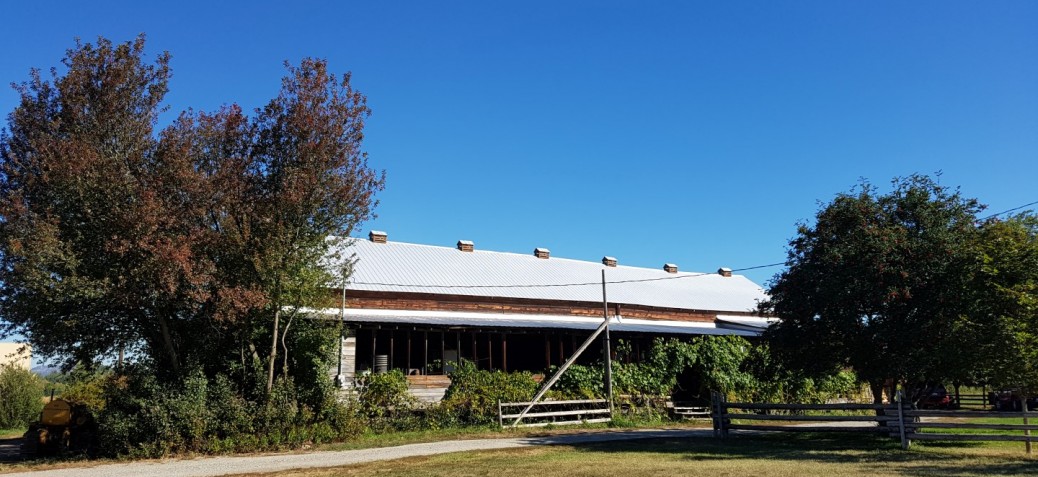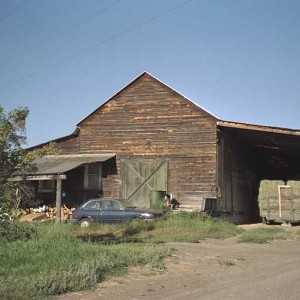Tobacco Barn on G. Thomson Farm
Place Description
The historic place is the deteriorating tall, wood Tobacco Barn on the Thomson Farm, a utilitarian agricultural structure built in 1926 on the property at 4193 Gordon Drive in Kelowna's Mission Sector.
Heritage Value
This barn has value as is a relic of the third and final phase of the local tobacco industry, an endeavour that ultimately failed, but which for a time looked poised to become Kelowna's main industry. Tobacco was only one of a range of crops that have been grown on this farm, which has been operated by the Thomson family for more than a century, another aspect of the barn's heritage value.
The property on which this barn stands was purchased in 1898 by Scots-born Gifford R. Thomson (see 4193A Gordon Drive), and was subsequently operated by his sons Wilberforce ('Wilber') and John ('Jock') Thomson. In 1928 the Thomsons, along with several other farmers in Okanagan Mission, were growing tobacco, and the barn was presumably erected for that crop. It is not as large as some of the other surviving tobacco barns, but it would have functioned in the same way.
Tobacco is demanding both in its growing and in its curing, and barns such as this were designed to give closely controlled conditions for drying the tobacco after it was harvested. They were made large enough for a wagon and team of horses to drive right through. Cupola ventilators on the roofs and hinged slats in the walls could be opened or closed for air circulation. The harvested tobacco plants were speared through the thick bases of their stalks onto four-foot laths, and then hung in the barns in layers, with an air space between. Ventilation in the barn was controlled to allow fermentation, or 'curing', of the leaf as it slowly dried.
The leaf grown in the third phase of the local tobacco industry, which began in 1926, was mostly for pipe tobacco and for cigarettes (mixed with leaf grown at Sumas, Washington), as cigars were in decreasing demand, and it was sold under the 'Kelowna Pride' brand.
Thomson's venture into tobacco was not a success. Since the failure of Kelowna's tobacco industry, the barn has been used for general farm purposes and hay storage. The cupola ventilators have been removed and shed-roofed side bays added, but the tall, central portion remains from the original structure.
Character Defining Elements
- Wood post-and-beam construction
- Utilitarian agricultural building style
- Tall, steeply gabled central core remains from the original barn
- Large openings at the ends to allow carts to drive through
- Ventilators in side walls
- Horizontal wood siding on side bays
- Building is set on an active farm





